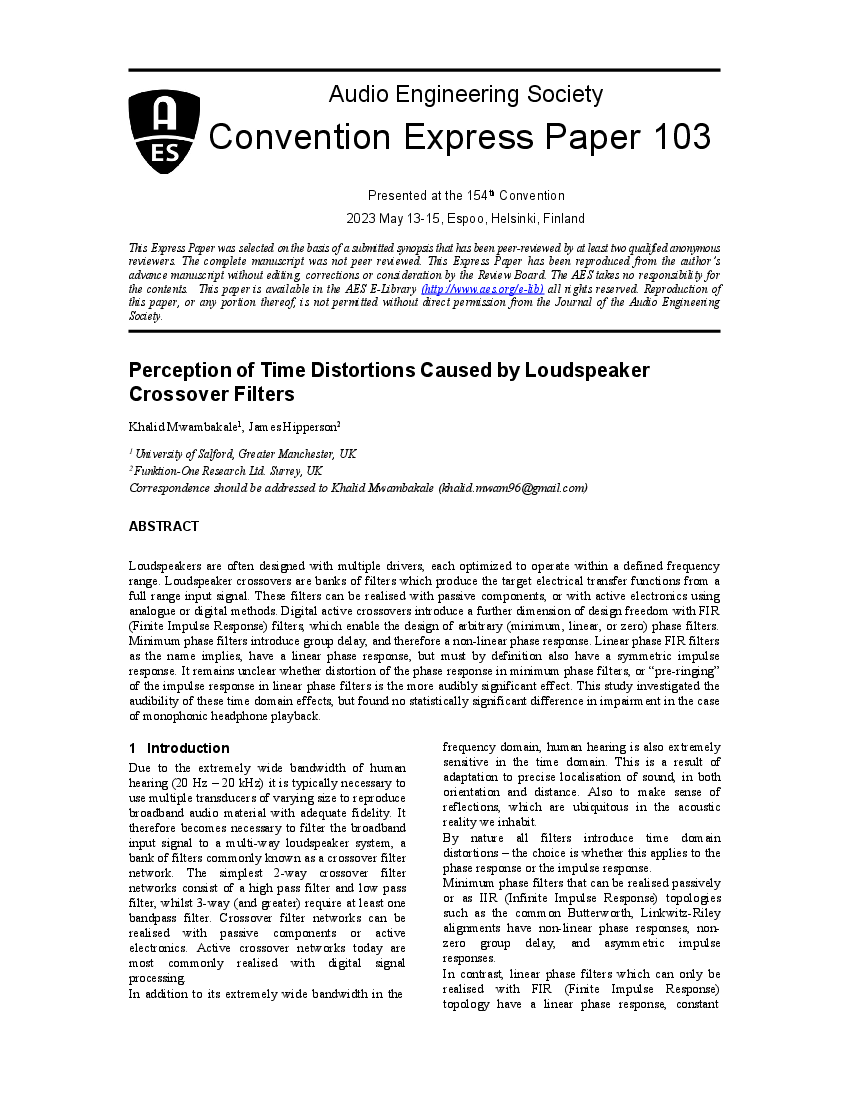Home / Publications / E-library page
You are currently logged in as an
Institutional Subscriber.
If you would like to logout,
please click on the button below.
Home / Publications / E-library page
Only AES members and Institutional Journal Subscribers can download
Loudspeakers are often designed with multiple drivers, each optimized to operate within a defined frequency range. Loudspeaker crossovers are banks of filters which produce the target electrical transfer functions from a full range input signal. These filters can be realised with passive components, or with active electronics using analogue or digital methods. Digital active crossovers introduce a further dimension of design freedom with FIR (Finite Impulse Response) filters, which enable the design of arbitrary (minimum, linear, or zero) phase filters. Minimum phase filters introduce group delay, and therefore a non-linear phase response. Linear phase FIR filters as the name implies, have a linear phase response, but must by definition also have a symmetric impulse response. It remains unclear whether distortion of the phase response in minimum phase filters, or “pre-ringing” of the impulse response in linear phase filters is the more audibly significant effect. This study investigated the audibility of these time domain effects, but found no statistically significant difference in impairment in the case of monophonic headphone playback.
Author (s): Mwambakale, Khalid; Hipperson, James
Affiliation:
University of Salford, Greater Manchester, UK; Funktion-One Research Ltd, Surrey, UK
(See document for exact affiliation information.)
AES Convention: 154
Paper Number:103
Publication Date:
2023-05-06
Import into BibTeX
Session subject:
Transducers
Permalink: https://aes2.org/publications/elibrary-page/?id=22125
(802KB)
Click to purchase paper as a non-member or login as an AES member. If your company or school subscribes to the E-Library then switch to the institutional version. If you are not an AES member Join the AES. If you need to check your member status, login to the Member Portal.

Mwambakale, Khalid; Hipperson, James; 2023; Perception of Time Distortions Caused by Loudspeaker Crossover Filters [PDF]; University of Salford, Greater Manchester, UK; Funktion-One Research Ltd, Surrey, UK; Paper 103; Available from: https://aes2.org/publications/elibrary-page/?id=22125
Mwambakale, Khalid; Hipperson, James; Perception of Time Distortions Caused by Loudspeaker Crossover Filters [PDF]; University of Salford, Greater Manchester, UK; Funktion-One Research Ltd, Surrey, UK; Paper 103; 2023 Available: https://aes2.org/publications/elibrary-page/?id=22125